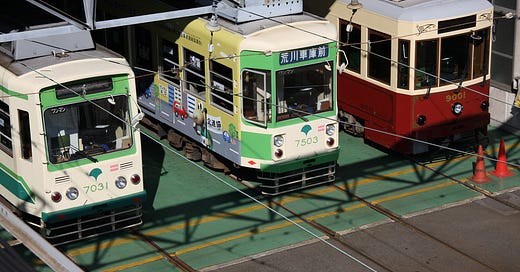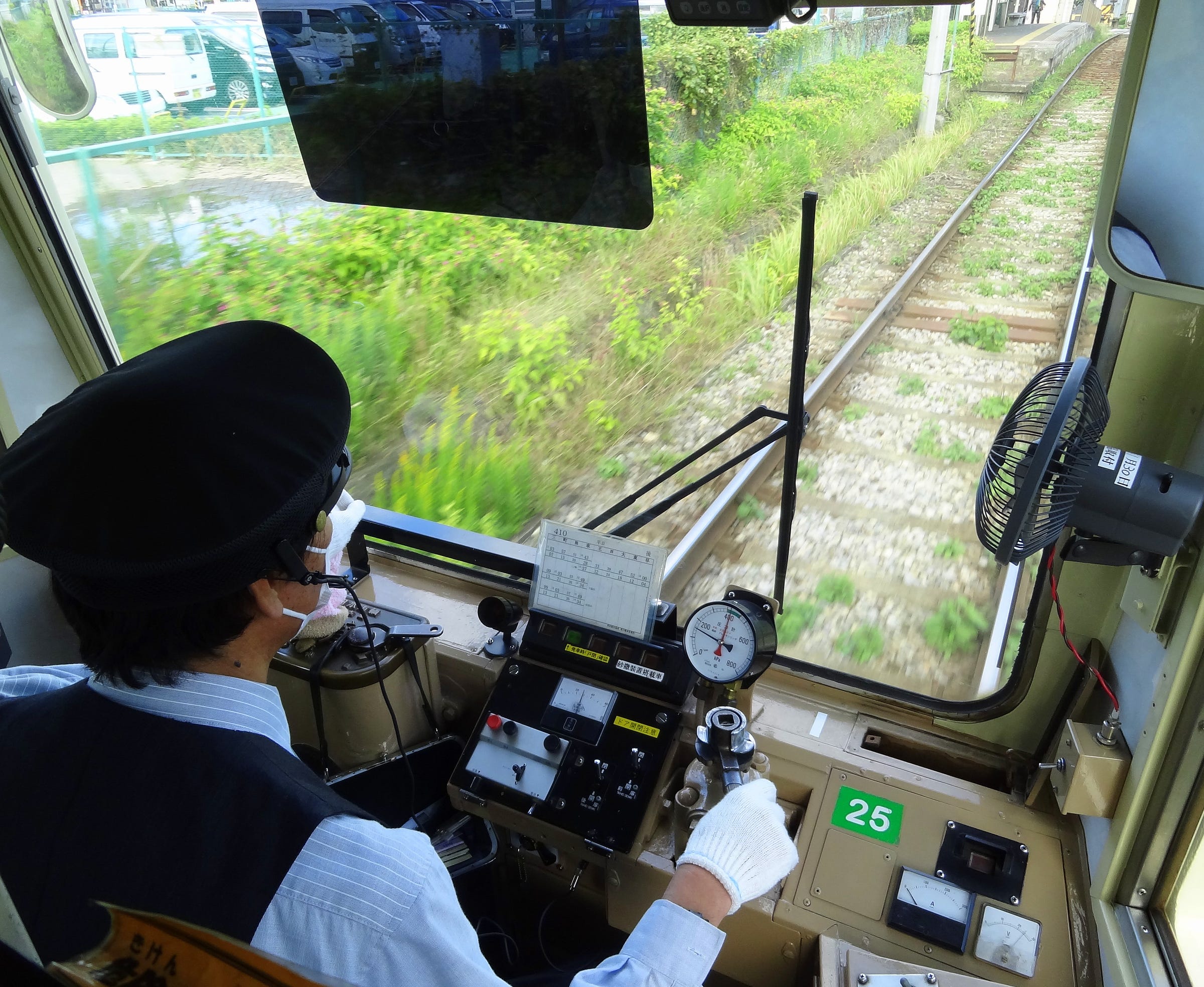Welcome aboard again. You can read the first part of this story here.
Leaving Zoshigaya cemetery, I decided to board the streetcar, as the next stretch wasn’t that interesting – a gray area of dull buildings and the usual mall. However, after the tram intersected the Yamanote Line loop at Otsuka Station and shot north toward the outer limits of the city, it was back to the usual Old Tokyo feeling. Walking the maze of back streets and alleys that comprise these supposedly unappealing neighborhoods was a refreshing experience, after the usual hustle of the business and entertainment districts.
About halfway from the terminus, the streetcar reached Asukayama and finally took some courage and decided to join the car traffic. This is a pretty busy intersection and drivers have to reduce the toy train’s speed to a crawl. So I decided to get off and explore the area.
Asukayama is a place of great historical and natural interest. Located on high ground, with streams that spill over waterfalls to feed the Shakujii River, it was subject to large-scale tree planting in the 18th century by order of the shogun. Many cherry trees were planted on the hilltops, and when they bloomed, hanami (flower viewing) parties were given that attracted sophisticates from all over the city.
Some of the trees remain (though a panoramic look from the tower on the top of the hill will show you a forest of mostly low, gray buildings) together with four of the original seven waterfalls in the garden on the back of the Oji Inari Shinto shrine. This show of endurance is no mean feat, considering that the industrialization drive of the 19th century destroyed a good part of the natural environment and during WWII, made the area a target for heavy US bombing.
After some more random zigzagging I found, half-hidden behind a group of houses, a Buddhist temple. I couldn’t read the Chinese characters that make up its official name, but I learned from a small sign near the entrance that it’s also known as Akachanji (Babies Temple). Many towns in Japan have a place like this, easily recognizable by the many dolls and toys one can find piled up in front of the altar. Many women who can’t get pregnant or who seek divine protection for their soon-to-be-born child come here and pray. Still many others seek forgiveness after they had an abortion. In Japan, abortions are relatively easy to perform, and neither Shinto nor Buddhism has problems with that. On the other hand, sexual education is nearly non-existent and for many couples, condoms are the only known or readily available means of birth control.
Back on the streetcar, I made two more stops: one at Kajiwara Station, where next to the tracks, there is a shop that sells sweets in the shape of streetcars (a real treat for train otaku).

The last stop was Minowabashi Station, the eastern terminal. Here I paid a visit to a coffee shop whose owner is even crazier than me about streetcars and, besides coffee, sells windup toy trams. I heard all kinds of tall and fascinating stories from him and just before I left, he whispered in my ear that actually, the Tokyo suburbs are home to one more streetcar line. But that’s another story…
A few years ago, the Tokyo Metropolitan Bureau of Transportation rebranded the Arakawa Line as Tokyo Sakura Tram (sakura means cherry blossom) to add some spark to the streetcar operation. Whatever, it remains a humble, old-fashioned little train serving a dusty, low-key part of Tokyo. Which makes me love it even more.









